If you cross the Sigourney Street bridge between Frog Hollow and Asylum Hill, especially walking, rolling in a chair, cycling, or scootering, you are aware of the long ugliness of that concrete mess. It’s not the longest bridge in the world, or the state, but it can feel like that when the sun is beating down and there’s no greenery on it for the two or three minutes it can take to cross on foot.
And then, you reach the other side.
If going south, you are met with a dozen or more new trees planted by KNOX a few months ago, along with the edge of Pope Park.
If going north, you are welcomed by a burst of color at the corner of Sigourney Street and Hawthorn Street.
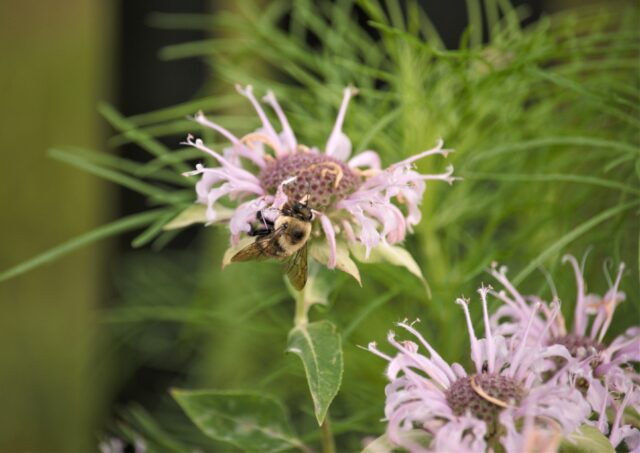
The community garden is fairly new, at least compared with some of the others in Hartford, also managed by KNOX. Formerly, it sat as a vacant lot, which was intended for use as a parking lot by Aetna, despite the glut of surface parking they already have and do not use in the Frog Hollow and Asylum Hill neighborhoods. Before that, it was a yard with a gorgeous Victorian home, expected to be demolished to make way for that aforementioned planned parking lot. The home was salvaged, but moved a mile away to Ashley Street. Somehow, the lot was never developed for parking and is now used for something that actually serves the community.
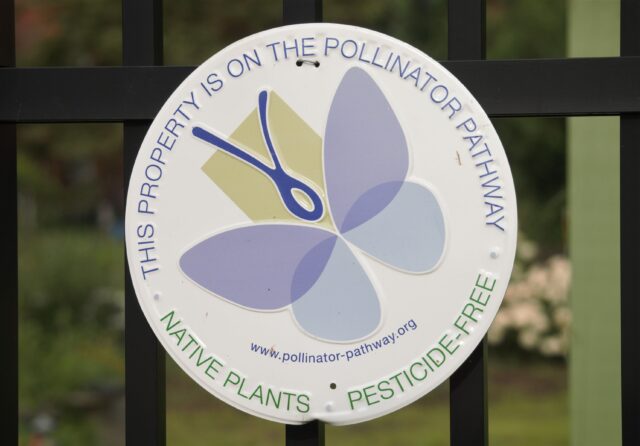
Even newer than the garden itself is its status as park of a/the Pollinator Pathway. Some of the work leading up to this happened in previous seasons, but this year, it’s in bloom.
The flowers around the perimeter are plants that bees, butterflies, and other pollinators enjoy, including Wild bergamot and Black-eyed susans.
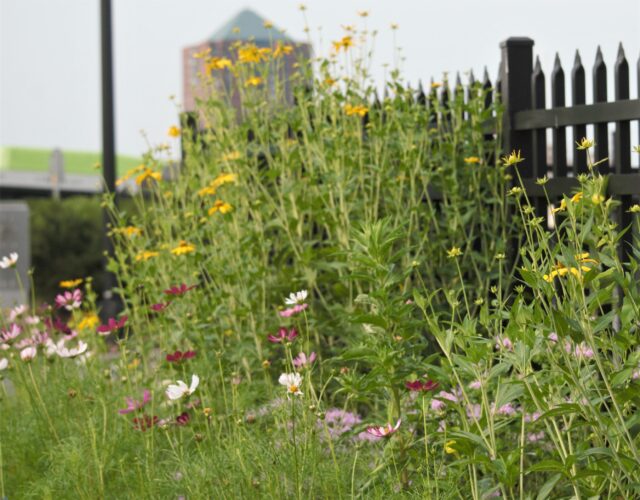
The point of pollinator pathways is to provide food and habitat for the creatures who pollinate the plants that become our food. With bees having a range of about 750 meters, the aim is to make sure that their food and shelter sources are not more distant than that. It’s almost exactly 750 meters, as the crow flies, from this garden to the one outside of the church at the corner of Niles and Woodland Streets. People took the effort to install these in Asylum Hill over the last few years.
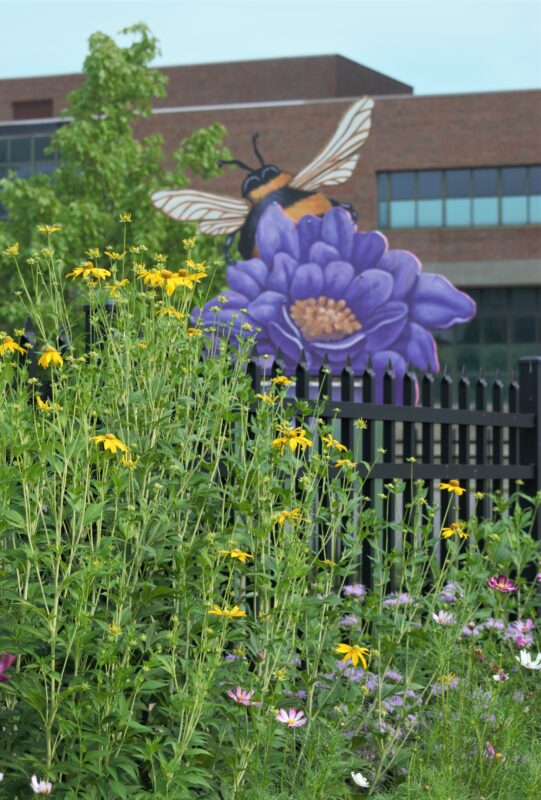
There hasn’t been this same organized effort in all neighborhoods, but more and more native plants can be found, regardless. A discussion I’ve been having with a friend is whether it’s better to try to establish a more consistent type of pathway, or if it’s enough to get pollinator-attracting plants into more Hartford yards, with the hope that this will either serve its purpose or inspire others to upgrade their lawns as well.
Climate Possibilities is a new series about climate mitigation, along with resilience, resistance, and restoration. It’s about human habitat preservation. It’s about loving nature and planet Earth, and demanding the kind of change that gives future generations the opportunity for vibrant lives. Doomers will be eaten alive, figuratively. All photographs are taken in Hartford, Connecticut unless stated otherwise.
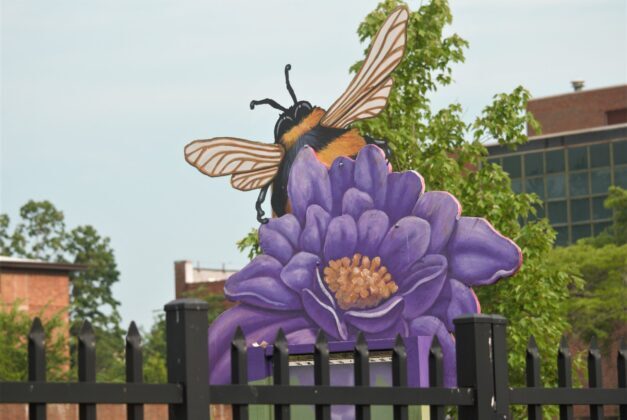
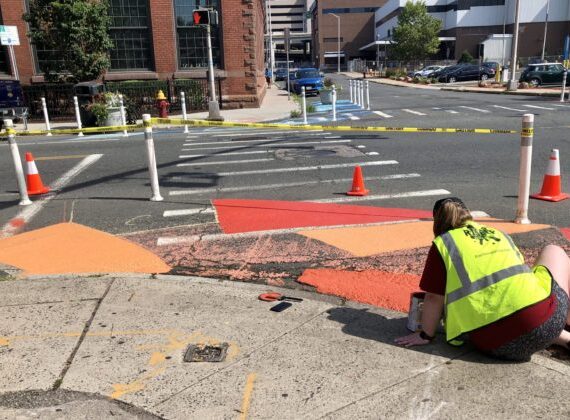
Richard
What a wonderful essay. The pathway garden must be beautiful to see. I wondered when they were going to get it going as I use to look at that lot when I was in the area. Whenever I go around it is so nice to see homes that are a pollinator paradise with all flowers planted in the front yard.
Of course, I would vote for both pathway and home gardens. Perhaps all of my bees, & butterflies have moved over to Hartford as I am seeing less this year. Early this week I was happy to see that the bee flies that become a living crown for the Queen of the Meadow, (Joe Pye Weed) were coming back. In the garden near my shed the Queen is nearly 10′ tall. They also love the large Queen Ann’s Lace plants along my back fence. I have only seen 3 Butterflies this year and the bees that use to fly up and stare at me are gone. My gardens are very friendly, I use no chemicals or harmful sprays and I have growing, Wild Yarrow in 3 gardens, Tansy 2- 7′ tall plants, full of yellow button flowers, Mugwort, flowering Oregano, Mullein, Bee Balm, Joe Pye Weed, and many colorful annuals. Still the insects are missing. Only a very few lighting bugs are blinking around here, kids must have caught them in a jar. All though I have been seeing more crickets this year.
Over the fence and down the bank of the road to the river it is wild land. Poke weed, summer asters, thistle, day lilies, wild raspberries, small trees, and other plants called weeds lend protection for the pollinators. The only insect that seems to be thriving are the mosquitos. I hope whatever bats are left are getting fat and hopefully producing more bats to eat more mosquitos. I wonder if anyone else has seen less bees and butterflies this year? I suppose it is only half of the summer gone.
Kerri Ana Provost
The pathway is more conceptual, so home gardens also make up part of it. I’ve seen more butterflies and bees this year, and I think it is because they are going to be pulled to where there’s more food. Time to get more places along the East Hartford riverfront to plant things butterflies like so you can have more visitors!
(I am laughing about the firefly comment)